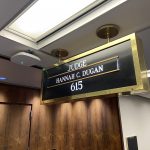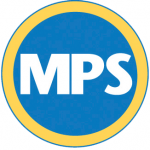Gov. Evers Introduces “The Most Pro-Kid Budget in State History” in 2025 the Year of the Kid
Governor’s budget includes the largest investment in Wisconsin’s kids by any governor in Wisconsin history
Governor proposes largest direct investment in state general school aids in 30 years while holding the line on property taxes for average Wisconsin homeowners
MADISON — Gov. Tony Evers tonight, during his 2025-27 Biennial Budget Message, announced his 2025-27 Executive Budget will make historic investments in public education at every level, including K-12 education and the state’s higher education institutions. This comes as, last month, Gov. Evers declared 2025 the Year of the Kid in Wisconsin, urging the Wisconsin State Legislature to join him in doing what’s best for kids in this budget by investing in and supporting Wisconsin’s kids both in and out of the classroom while holding the line on property taxes to make sure the average homeowner will not see a property tax increase. More information regarding Gov. Evers’ plans to provide nearly $2 billion in tax relief, hold the line on property taxes, and cut income taxes for middle-class families is available here.
Gov. Evers tonight announced his 2025-27 Executive Budget will make historic investments in public education at every level, including:
- Supporting the Wisconsin Technical College System (WTCS) and the important role it plays in recruiting, training, and retaining talented workers in the state’s workforce;
- Investing more than $3.15 billion in K-12 public schools, nearly all of which is spendable revenue for schools, including the largest direct investment in state general school aids in 30 years; and
- Delivering on his promise to provide the largest two-year increase for the University of Wisconsin (UW) System in state history with a more than $856 million investment over the biennium.
- Protect kids and families from harmful contaminants like lead and PFAS and expand access to clean, safe drinking water for Wisconsinites across the state;
- Expand access to affordable child care and invest in Wisconsin’s child care providers to ensure they can hire more staff, reduce wait lists, and, ultimately, lower the cost of child care so working parents and families have a little more breathing room in their household budgets;
- Help working Wisconsinites and families afford everyday, out-of-pocket costs by providing $2 billion in tax relief through efforts to hold the line on property taxes, exempt many everyday household items and expenses from the sales tax, and cut income taxes for middle-class Wisconsinites;
- Improve access to quality, affordable healthcare in Wisconsin, improve health outcomes, hold insurance companies accountable, prevent medical price gouging and surprise medical bills, and improve transparency in the health insurance industry; and
- Keep Wisconsin’s kids, families, schools, and communities safe by reducing crime and preventing gun violence statewide.
Additional details for some of the above budget initiatives are available in the above linked press releases.
Relevant excerpts from Gov. Evers’ 2025-27 Biennial Budget Message are available below:
“… This budget is about doing what’s best for our kids—yes, by addressing pressing challenges facing our kids today. But we must also work to do what’s best for our kids’ futures, too. Every Wisconsin kid should have access to a high-quality public education from early childhood to our K-12 schools to our higher education institutions. In 2025 the Year of the Kid, I’m urging the Legislature to do what’s best for our kids by approving significant investments in public education at every level in Wisconsin.
“Let’s start with higher education. Wisconsin has one of the best technical college systems in the country. So, our budget invests in green jobs, our healthcare workforce, and worker training for artificial intelligence. And I’m proposing nearly $60 million to support our technical colleges and their good work.
“But I also want to talk about our universities. This is a make-or-break budget for our UW campuses. I know there’s a lot of talk in Washington about higher education, and look—folks, I can’t speak to what’s happening on other campuses in other parts of our country. But I visit just about every campus every year, so I’ve seen what’s happening on our UW campuses with my own two eyes. And we’re doing things differently here.
“At UW-Eau Claire, they’re working to improve healthcare outcomes and lower healthcare costs in rural areas. UW-Platteville is helping address rural healthcare shortages by training a new generation of physician assistants. UW-Milwaukee and UW-Whitewater are among the top campuses in the country for supporting students who are servicemembers or veterans. Through a workforce-centered program, UW-Parkside has increased graduation rates by about 20 percent. UW-Stevens Point is training more than 1,200 future educators who are supporting classrooms in over 200 different school districts across Wisconsin. UW-La Crosse is partnering with local businesses to make sure the skills they’re teaching meet local employer needs. And I can go on.
“UW-Oshkosh supported over 500 Wisconsin small businesses that needed help with digital marketing support efforts. UW-Green Bay is working with school districts to give high school students the opportunity to earn an Associate’s degree. UW-Superior’s Small Business Development Center is helping entrepreneurs start or expand their businesses across eight Northern Wisconsin counties. UW-River Falls is expanding hands-on learning opportunities to support our dairy industry here in America’s Dairyland. UW-Madison is leading national efforts to study Alzheimer’s to help improve treatment and find a cure for the more than 110,000 Wisconsinites who live with that cruel disease every day. UW-Stout’s Manufacturing Outreach Center has worked on more than 470 projects with Wisconsin manufacturers across 33 of our 72 counties.
“Folks, this is the story of what’s happening on UW campuses. Each and every day, UW is helping improve our daily lives here in Wisconsin and the world over. And our ability to compete and be successful—to have a strong economy and workforce, to retain our homegrown talent, to solve problems in our smallest towns to our largest cities, and to make life better for everyone who calls our state home—depends on our UW System. Period.
“Today, after years of attacks and disinvestment, UW is facing campus closures and program cuts, students are facing tuition increases, and faculty and staff are facing layoffs. And with new federal efforts to cut higher education funding, things for UW could get a whole lot worse.
“So, tonight, I’m keeping the promise I made to the people of Wisconsin, and I’m asking the Legislature to approve the largest two-year increase for our UW System in state history. We have to get this done, folks.
“It’s up to us—each of us, together—to invest in our UW System, to defend it, and to protect its promise for future generations. And, let me be clear to elected officials in this building whose public education at UW helped get you to where you are today: You share in that important responsibility. Don’t tell our kids they don’t deserve to have the same opportunity you did.
“Doing what’s best for our kids will always be what’s best for our state. Investing in our kids will pay dividends for their futures—and ours, too. It’s why my pro-kid budget makes significant investments in public education at every level, including our K-12 schools.
“The cost of shortchanging our kids is expensive, folks. We cannot afford to fail them. We have a responsibility to improve outcomes for our kids, both within our schools and beyond them. I’ve talked a lot about the work we must do to improve student outcomes in class and how we can finally help shorten the odds. And we have to begin with the basics.
“I know some legislators have tried using student outcomes to argue against investing in our kids and our schools. Folks, you’ve got it backwards. The outcomes we’re seeing are exactly why we must do more to do what’s best for our kids.
“The Legislature should approve my plan to make sure every kid can get healthy meals at school at no cost, regardless of whether their family can afford it. Why? Because our kids will perform better in our classrooms when we do.
“The Legislature should approve my plan to make sure kids can access comprehensive mental health services no matter where they go to school. Why? Because our kids will perform better in our classrooms when we do.
“If the state isn’t committed to meeting our kids’ basic needs, then we can’t have serious conversations about improving outcomes. It’s that simple. If our kids are fed, healthy, and feel safe, they will perform better in class. So, we have to get back to the basics in this budget.
“Reading is fundamental. There are a lot of discussions right now about our kids’ reading scores, how we measure student outcomes, and how we improve them, regardless of how they’re measured. These discussions are important. But this Legislature and I approved $50 million in the last budget that could be improving our kids’ reading and literacy if it wasn’t still sitting in Madison today, nearly two years later. So, we can have those discussions, but let’s start by releasing millions of dollars we all agreed would improve reading statewide.
“We are going to have to work even harder to reverse these trends and make up for lost time. It’s one of the reasons that, in 2025 the Year of the Kid, I’ll be asking the Legislature to approve $80 million to invest in literacy coaches, tutoring, and other key supports to help improve reading scores statewide.
“Doing the right thing for Wisconsin begins by doing what’s best for our kids. So, my pro-kid budget makes the largest investment in Wisconsin’s kids in any budget by any governor in state history.
“During my first term, I fought to secure the first special education aid increase in over a decade and the largest increase in funding for special education ever in state history. Tonight, I’m proposing the highest-ever amount of special education aid funding, and we’re going to guarantee the state reimburses special education costs at 60 percent to ensure every kid gets the public education they deserve.
“But folks, here’s the truth: our current system isn’t working. Take the Mauston School District, for example. The fate of their school district is on the ballot today, and kids, parents, and educators will be holding their breath tonight to see if their schools will be saved. That’s a reality that’s become all too common. In 2024, we saw an historic number of school referendums on the ballot. And 169 of those referendums passed. Nearly 400 referendums passed statewide in the last four years.
“So, the good news is Wisconsinites have shown this Legislature time and time again they support increasing investments in our public schools. The bad news is Wisconsinites had to raise their own property taxes to prove it.
“This system isn’t sustainable—it creates winners and losers, haves and have-nots. But referendums are not inevitable. Wisconsinites wouldn’t have to raise their own property taxes to keep school lights on and doors open if this Legislature invested in K-12 education from the get-go. And the budget I’m announcing tonight proves we can both make the investments in our kids that we need to and hold the line to prevent property taxes from going up.
“All told, our pro-kid budget will do what’s best for our kids by providing more than $3.15 billion, nearly all of which is spendable revenue for schools across Wisconsin. And we’re going to make those investments while holding the line on property taxes to ensure the average homeowner will not see a property tax increase.
“My budget would create a new incentive for local governments to freeze their local property taxes. If local governments agree not to raise local property taxes, they’ll get a direct payment from the state. This will ensure local partners can still afford to pay for basic and unique local needs alike without property taxes going up. …”
DOING WHAT’S BEST FOR KIDS AND INVESTING IN K-12 EDUCATION
Over the past six years, under Gov. Evers’ leadership, the state has seen historic increases in public school funding and special education funding. After a decade of disinvestment, Gov. Evers has enacted budgets to restore two-thirds funding for public schools for the first time in over two decades, provide the largest special education aid increase in state history, and bring per pupil aid to its highest level ever. Today, Wisconsin’s K-12 schools have returned to the top 10 in the country after falling to 18th under previous leadership. Additionally, in recognition of the mental health crisis facing Wisconsin’s kids, Gov. Evers has made investing in mental health a top priority, and nearly every school district in the state has benefitted from expanded access to school-based mental health support for kids through Gov. Evers’ “Get Kids Ahead” initiative.
Together with 2023 Wisconsin Act 11, the 2023-25 budget, as signed by Gov. Evers, built upon the historic progress of the Evers Administration toward fully funding public schools by providing an overall increase of nearly $1.2 billion in spendable authority for public school districts, including state categorical aids. This historic increase is generated by a $325 per pupil increase in revenue limits in each fiscal year, as well as an increase in the low revenue ceiling from $10,000 to $11,000 per pupil in the first year of the biennium. This was the largest increase in statewide revenue limit authority since revenue limits were first imposed on K-12 schools in 1993-94, and it is permanent and base-building.
To hold the line on local property taxes and prevent further increases in tax bills on the typical Wisconsin homeowner, Gov. Evers is proposing a more than $1 billion investment in aid to local governments and direct property tax credits to taxpayers over the biennium. The governor’s proposal would create a new county and municipal property tax freeze incentive program by providing aid payments to counties and municipalities that commit to holding the line on property taxes. More on Gov. Evers’ plan to provide meaningful relief and hold the line on property taxes while investing in Wisconsin’s kids and schools is available here.
In addition to the $1.2 billion investment in general equalization aid, which is unrestricted funding that schools can use on any assortment of needs, the governor’s budget invests over $1.9 billion in categorical aids, including:
- Bringing the state’s reimbursement rate for special education to its highest level ever with a more than $1.1 billion investment to guarantee a reimbursement rate of 60 percent in both years of the biennium;
- Providing $18.5 million over the biennium to increase high-cost special education reimbursement;
- Providing the largest per pupil adjustments since revenue limits were first imposed by linking the per pupil revenue limit adjustment to inflation starting in the first fiscal year, providing projected increases of $334 per student in fiscal year 2025-26 and an additional $345 per student in fiscal year 2026-27;
- Increasing per pupil aid with a $212 million investment, including increasing funding by $58 per student in fiscal year 2025-26 and an additional $50 in fiscal year 2026-27 and creating a 20 percent weighting factor for economically disadvantaged students;
- Tackling revenue limit inconsistency statewide by increasing the low revenue ceiling to provide lower-spending school districts additional resources of $1,000 per student in fiscal year 2025-26 and an additional $400 per student in fiscal year 2026-27;
- Provide a greater level of “hold harmless” aid within the equalization aid formula so that school districts do not experience significant aid reductions from year to year that could result in budget cuts or property tax increases. Gov. Evers’ budget would ensure districts receive at least 90 percent of what they received in the prior year, instead of 85 percent as under current law;
- Investing more than $20 million over the biennium in sparsity aid to support the unique needs of Wisconsin’s rural schools and increasing per pupil payment by $100 for school districts with 745 or fewer students and school districts with 746 and 1,000 students;
- Investing approximately $300 million over the biennium for comprehensive school-based mental healthcare in schools statewide, including support for peer-to-peer suicide prevention programs and expanded mental health training;
- Ensuring no kid goes hungry at school with a $154.8 million investment for the governor’s “Healthy Meals, Healthy Kids” initiative to provide school breakfast and lunch to Wisconsin’s kids at no cost;
- Addressing lead contamination in schools and communities statewide, including providing $250,000 for grants to school districts and independent charter schools to replace water fountains and help reduce contaminants in water, including lead and chlorine;
- Improving financial literacy statewide with $5 million over the biennium for his “Do the Math” personal financial literacy initiative;
- Improving student outcomes in reading and literacy statewide by investing more than $80 million over the biennium, including marshalling the $50 million that legislative Republicans have refused to release;
- Preparing students to be workforce ready with $10 million over the biennium to support career and technical education opportunities for high school students; and
- Supporting access to computer science education to ensure kids are prepared for the 21st Century, including $10 million over the biennium for grants to school districts to access computer science curriculum, among several other categorical aid provisions.
In addition, the governor’s budget once again makes critical investments in bolstering the state’s education workforce through “Grow Your Own” initiatives, incentivizing school districts to participate in the state’s new teacher apprenticeship program, offering tuition remission for semesters UW students are student teaching, and enabling school districts to rehire retired educators.
Supporting Kids’ Mental Health Statewide
During his address, Gov. Evers reiterated the need for significant mental health investments to better support kids in and out of the classroom and announced an approximately $300 million investment over the biennium for comprehensive school-based mental healthcare initiatives for students and schools across the state. The governor’s proposal builds on his Administration’s efforts to address the ongoing mental health crisis, including investments in several programs aimed at offering mental health trainings to schools, parents and guardians, and students, bolstering mental health literacy and stigma reduction in schools, and hiring more pupil service professionals such as school counselors, psychologists, social workers, and school nurses.
Wisconsin continues to see troubling statistics regarding youth and student mental health in Wisconsin, underscoring the urgent need to invest in statewide, comprehensive, evidence-based mental healthcare for Wisconsin’s schools. Gov. Evers’ nearly $300 million investment in comprehensive mental healthcare for kids includes:
- More than $167.7 million over the biennium to help fund comprehensive school mental health services aid to school districts and independent charter schools. Aid will provide payments of $100 per pupil with a minimum payment of $100,000 for school districts and independent charter schools with eligible uses, such as hiring mental health professionals, utilizing mental health literacy and stigma reduction programs for students and adults, and more;
- More than $129.9 million to reimburse schools for costs supporting an expanded list of school mental health professionals, including social workers, school counselors, psychologists, and nurses;
- $500,000 for peer-to-peer suicide prevention programs to double grant amounts for peer-to-peer suicide prevention programs in schools and increase the grant amount; and
- $760,000 to increase the amount and types of mental health trainings provided to schools by CESAs and the Wisconsin Safe and Health Schools Center.
According to the Wisconsin Office of Children’s Mental Health’s (OCMH) 2024 Annual Report, youth across the state report increasing levels of anxiety, depression, self-harm, and suicidal thoughts at extremely concerning rates in the past decade, especially among girls, kids of color, and LGBTQ youth:
- Two-thirds of Wisconsin high school girls reported experiencing anxiety, an increase of nearly 33 percent in recent years;
- More than one-third of high school students in Wisconsin experience feelings of sadness and hopelessness, and overall, kids feeling depressed has increased by 42 percent in the last decade; and
- The number of students who have seriously considered suicide has risen by approximately 41 percent over the past decade, with nearly one in four girls and 40 percent of LGBTQ youth reported having seriously considered suicide in the last year.
Gov. Evers has made investing in youth mental health a cornerstone priority of his administration. In 2022, Gov. Evers created the “Get Kids Ahead” initiative and invested $30 million in school-based mental health support and services for nearly every school district in the state. He also declared 2023 the Year of Mental Health, calling mental and behavioral health a “burgeoning crisis” affecting the state and Wisconsin’s kids, families, and workforce.
Improving Literacy and Reading Outcomes
The final 2023-25 biennial budget signed into law by Gov. Evers included a nearly $50 million investment to implement a statewide reading curriculum overhaul with the aim of improving reading and literacy outcomes for K-12 students. However, Republican lawmakers on the Joint Committee on Finance (JFC) have still refused to release the funding to date.
To help improve kids’ outcomes, including in reading and literacy, Gov. Evers is proposing the largest investment in state history aimed at early literacy and reading improvement—$84.6 million—to improve kids’ reading and literacy. The governor is proposing to:
- Invest over $80 million over the biennium to invest in literacy coaches, diagnostic assessments in reading, and one-on-one intensive literacy tutoring, among other critical efforts to help improve kids’ reading;
- Support several organizations that serve kids’ literacy needs by providing $2.2 million over the biennium to The Literacy Lab and $1 million over the biennium to Reach Out and Read through the Wisconsin Department of Health Services; and
- Provide more than $1.4 million over the biennium for Wisconsin Literacy to improve adult literacy through expert trainings, personalized consultations, and workforce connections.
Making Sure No Kid Goes Hungry at School
Many Wisconsin kids face daily anxiety about where their next meal will come from, with as many as one in six children facing hunger in Wisconsin. Food insecurity and poor nutrition often make school difficult for kids and have been shown to have a negative effect on concentration, student outcomes and achievement, and increased behavioral challenges.
According to the Wisconsin Office of Children’s Mental Health’s 2024 Annual Report, food insecurity has been linked to impacting children’s mental health, and in 2023 alone, the Wisconsin Youth Risk Behavior Survey found 30 percent of students who were food insecure seriously considered suicide. Additionally, studies have shown that kids who face food insecurity have increased rates of stress, depression, and other behavioral challenges due to increased anxiety about their parent’s financial well-being, access to food, and embarrassment surrounding their food insecurity. Studies have also shown that in households with children who attend schools that offer free school meals, household spending on groceries fell as much as $39 a month, roughly over $460 a year.
As announced in his 2025 State of the State address, Gov. Evers’ plan helps address food insecurity and hunger affecting kids’ learning and outcomes in classrooms every day while also working to lower costs for parents and families. The governor’s proposal aims to make sure every kid has access to a healthy breakfast and lunch every day at school with no stigma and at no cost to families.
The governor’s “Healthy Meals, Healthy Kids” 2025-27 Executive Budget investment includes providing:
- $147.7 million to fully fund school breakfast and lunch for all K-12 kids with no stigma and at no cost to them;
- $500,000 over the biennium to support Farm to School grant program-eligible state match activities that seek to improve student health and nutrition;
- $6.1 million for school breakfast reimbursement at $0.15 cents per meal under currently law and extend eligibility to independent charter schools and state residential schools operated by the Wisconsin Department of Public Instruction (DPI);
- $458,900 over the biennium to fully reimburse school districts for the cost of providing school-day milk; and
- $250,000 for grants to help school districts and independent charter schools replace water fountains with water bottle filling stations with filtration systems to reduce contaminants in water, including lead and chlorine. Additional information on Gov. Evers’ 2025-27 Executive Budget proposals to address contamination and ensuring clean drinking water for kids and families is available here.
Bolstering the Teacher Pipeline and Education Workforce
According to a 2023 report by the Wisconsin Policy Forum, the average annual teacher turnover rate from 2009 to 2023 was 11.5 percent, reaching an alarming 15.8 percent in the 2022-23 school year. The period studied included both the highest levels on record of teachers moving between districts and leaving the profession altogether. The report found that both rural and urban districts, districts with large populations of low-income students and students of color, and small school districts were the most impacted. Additionally, turnover was highest for teachers of color.
Having spent more than 30 years in public education himself, Gov. Evers has long supported and advocated for efforts to help recruit, retain, diversify, and bolster the state’s education workforce. During Gov. Evers’ 2024 State of the State address, he declared 2024 the Year of the Worker and announced the creation of a pilot program for a new apprenticeship pathway in the field of education. Developed through a partnership of the DPI and the Wisconsin Department of Workforce Development (DWD), this new pilot program helps address issues in turnover and retention while also bolstering and strengthening the state’s educator pipeline by reducing barriers and encouraging more people to enter the field.
To build on this work, the governor’s 2025-27 Executive Budget bolsters the state’s education workforce and enhances the ability of school districts to recruit, train, and retain educators with a nearly $22 million investment, including:
- $5 million over the biennium for grants to support “grow your own” initiatives to bolster Wisconsin’s teacher pipeline, which may include providing current educators with support to gain additional higher education credits, licenses, or certifications, engaging with community organizations, and supporting student organizations with “future teacher” missions;
- $9 million in fiscal year 2026-27 to provide stipends to student teachers;
- $3.8 million in fiscal year 2026-27 to provide stipends to teachers who agree to train and oversee student teachers or interns;
- $62,500 in fiscal year 2026-27 for future librarian stipends to school library students engaged in supervised placement as part of relevant preparatory program;
- $1.6 million over the biennium to enhance support for peer review and mentoring of early career teachers;
- $500,000 over the biennium to support Educator Rising chapters to encourage the next generation of teachers. Additionally, require that teacher apprenticeship be an eligible pathway to licensure for aspiring teachers in Wisconsin; and
- $2 million over the biennium through DWD’s Fast Forward program to incentivize school districts to offer teacher apprentice opportunities. Districts may use funding for expenses related to hiring teacher apprentices and for advancing teacher training in preparation for potential teacher apprentices.
Additionally, the governor’s budget would make higher education and educator preparatory training more affordable and accessible by requiring the UW System to offer tuition remission for any semester in which a student is engaged in student teaching as part of the educator preparatory program.
Finally, Gov. Evers is once again proposing to allow school districts to rehire retired educators, if (a) at least 30 days have passed since the employee left employment; (b) at the time of retirement, the employee does not have an agreement to return to employment; and (c) upon returning to work, the employee elects to not become a participating employee and continue receiving their annuity. This will make it easier to hire experienced educators and school staff to help keep class sizes small and improve student outcomes.
INVESTING IN THE WISCONSIN TECHNICAL COLLEGE SYSTEM
To continue addressing the state’s generational workforce challenges, Gov. Evers understands how important WTCS to recruiting, training, and retaining highly skilled workers. From business administration to manufacturing to early childhood education, the state’s technical colleges play a critical role in making sure Wisconsin has the 21st-century workforce needed to support a 21st-century economy. Therefore, Gov. Evers is proposing a nearly $60 million investment in WTCS that includes:
PROVIDING THE LARGEST TWO-YEAR INCREASE FOR UW SYSTEM
Gov. Evers believes higher education should be accessible, affordable, and attainable to all those who choose to pursue it, and that the UW System is not only an essential part of the state’s promise of public education but is a central part of the state’s future workforce and economic success.
Republican lawmakers have spent more than a decade waging war on public education in Wisconsin, including the UW System and higher education institutions, and since they took control over the Wisconsin State Legislature in 2011, they have consistently refused to make the necessary, meaningful investments that campuses desperately need to compete and that students deserve.
According to the State Higher Education Finance Report, which is released by the State Higher Education Executive Officers Association, Wisconsin ranked 42nd for public funding for four-year colleges based on 2022 data. A report released in April 2023 by the Wisconsin Policy Forum found that the UW System ranked 43rd nationally for per-student funding in 2021.
Gov. Evers last year delivered remarks to the UW System Board of Regents to announce his 2025-27 Executive Budget would propose the largest two-year increase for the UW System in the state’s history with a more than $800 million investment. This announcement came as six UW branch campuses announced closures and several UW campuses were forced to furlough and lay off employees, shift funding or make cuts to programs, and restructure campus operations. Tonight, Gov. Evers delivered on that promise, proposing an investment of $856 million to support the UW System statewide to prevent campus closures, lay offs, and continued cuts to one of the state’s greatest assets, ensuring that UW campuses around the state remain vibrant parts of their communities and engines of the state economies.
After accounting for debt service of $77.3 million, the governor is directing a $856 million investment to UW students and campuses statewide:
- $128.9 million to increase affordability for students while maintaining the highest quality academic institutions. The proposal also increases funding to veterans to better assist veterans and military personnel enrollees, and their families, at UW System institutions, including:
- $39.97 million to fund a “last dollar” scholarship, similar to UW-Madison’s “Bucky’s Promise.” In partnership with UW System, the governor’s investment would cover all UW tuition and fees not otherwise covered by financial aid at any institution systemwide. The program would be available to students from families with adjusted gross income that is less than the state median and would benefit an estimated 5,000 students;
- $308.3 million to expand student access to excellent higher education institutions through a variety of innovative methods including dual enrollment, direct admissions, and transfer pathways, including:
- More than $2 million over the biennium to help bolster high-need areas of Wisconsin’s workforce, including the healthcare industry across rural communities statewide;
- $22 million over the biennium to support student mental health services;
- More than $83.6 million over the biennium to enhance the state’s talent pipeline through career readiness, high impact practices, civil dialogue training, experiential learning, student wraparound services, assessments, loan forgiveness, and continuing education. This investment includes:
- $10.5 million for teacher loan forgiveness;
- $1 million to for foster youth programming;
- $600,000 over the biennium for UniverCity Alliance which leverages the campus’ academic and research resources to address challenges faced by urban areas;
- $2 million over the biennium to support journalism fellowships; and
- Funding to implement a student success management system;
- $166 million over the biennium to increase faculty wages to ensure the UW System can continue to compete for the best academic and administrative faculty and $56 million to ensure quality by recruiting and retaining the best educators and staff;
- $104.3 million to invest in innovative technologies, such as new curriculum and classroom applications, online programs, artificial intelligence research, recruitment and retention of faculty in artificial intelligence fields, curricular development and pedagogical enhancements around artificial intelligence, and research infrastructure. This provision includes the following:
- $6 million each for the Dairy Innovation Hub and the Freshwater Collaborative;
- $500,000 over the biennium to support education and training for small businesses and entrepreneurs in rural Wisconsin; and
- $6.3 million over the biennium to establish a statewide Parkinson’s Disease registry through the UW-Madison Population Health Institute; and
- $1 million over the biennium for the UW-Madison’s Missing-in-Action Recovery and Identification Project for missions to recover and identify veterans missing in action;
- $64.2 million over the biennium to fully fund the system’s basic costs to continue.
ADDITIONAL INFORMATION ON GOV. EVERS EFFORTS TO INVEST IN THE UW SYSTEM AND HIGHER EDUCATION
According to a memo from the nonpartisan Legislative Fiscal Bureau, in the 2011-13 biennial budget, the UW System requested more than $214.6 million over the biennium to fund their operations, but the Republican-controlled Legislature and former Gov. Scott Walker actually cut their budget by more than $203.7 million—resulting in a gap between what the UW System requested and what they were provided of more than $400 million.
Republicans’ cuts to the UW System budget in the 2013-15 and 2015-17 budgets similarly resulted in gaps of more than $39 million and nearly $340 million between what the System requested and what was provided, respectively.
After cutting a cumulative total of more than $412.6 million over three consecutive biennial budgets and while Gov. Walker was getting ready to run for re-election, during the 2017-19 budget, rather than cut the UW System’s funding further, Republicans provided approximately $12 million less than what the System requested. All of this is in addition to and on top of a decade-long tuition freeze, and with no new additional funding to offset the rising costs from the state, the UW System continued to see large deficits.
This pattern by Republicans in the Legislature of starving the UW System has continued throughout Gov. Evers’ administration despite his steadfast advocacy for providing meaningful support for the state’s higher education institutions:
- In the governor’s first budget, he proposed providing a $150 million increase for the UW System—the largest increase for the UW System in more than a decade.
- Unfortunately, Republican lawmakers only provided $66.5 million for the UW System in the 2019-21 budget.
- This meant only $12.7 million was made readily available for the UW System to utilize upon the enactment of the budget.
- In the 2021-23 budget, the governor again proposed a significant increase for the UW System—$190 million over the biennium.
- Republicans instead provided just $15.4 million, more than $170 million less than what Gov. Evers recommended.
- Finally, during the 2023-25 biennial budget process, Gov. Evers proposed more than $305 million for the UW System.
- Instead, Republicans chose to divert more than $31 million to the JFC supplemental appropriation and attempted to cut 188 positions relating to efforts around diversity and equity, the latter of which Gov. Evers was able to ensure UW could retain through vetoes in the biennial budget.
In response to Republican’s action in the 2023-25 biennial budget, the governor warned: “These cuts will be disastrous for our UW System, almost certainly causing cuts to campuses and critical programs statewide, and will only hurt our kids, our state’s economy, and our state’s workforce in the process.” The governors’ warning has proven to be well founded, as the UW System has seen layoffs, furloughs, programs cut or restructured, and entire branch campuses closing their doors.
Last year, in response to the UW System campus financial assessments that examined the strained financial circumstances facing UW System campuses—a consequence driven largely by both disinvestment in the UW System over the last decade-plus and inadequate recent state investments approved by the Wisconsin State Legislature to make the UW System whole, Gov. Evers announced he would be asking the Legislature to approve the largest increase in state support for the UW System in more than two decades in the next biennial budget, and the governor’s announcement today makes good on that promise.
NOTE: This press release was submitted to Urban Milwaukee and was not written by an Urban Milwaukee writer. While it is believed to be reliable, Urban Milwaukee does not guarantee its accuracy or completeness.
Mentioned in This Press Release
Recent Press Releases by Gov. Tony Evers
Gov. Evers, Serve Wisconsin Announce $9.3 Million in AmeriCorps Funding for Serve Wisconsin
Dec 16th, 2025 by Gov. Tony EversProjects will support critical youth and afterschool programming, conservation efforts, substance use recovery services, homelessness assistance, efforts to address local health needs, and more statewide
Gov. Evers Slams President Trump for New Federal Efforts to Undermine Wisconsin’s Artificial Intelligence Laws that Protect Kids and Families
Dec 15th, 2025 by Gov. Tony EversGovernor warns President Trump and Republicans in Congress of serious consequences for kids and families if they proceed with efforts to preempt state AI laws and punish states like Wisconsin for tackling harmful uses of the emerging technology






















